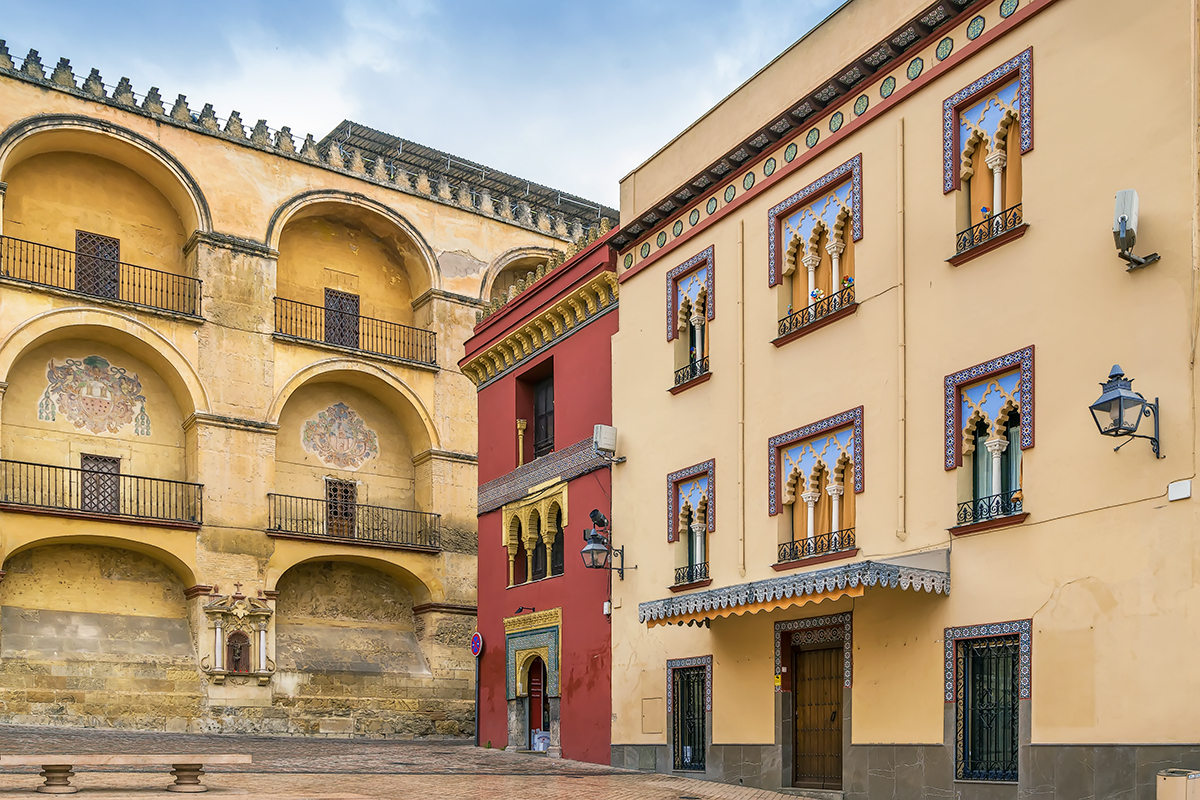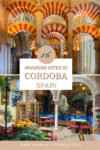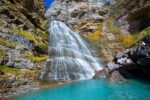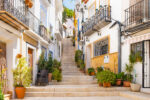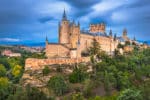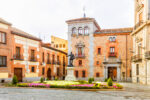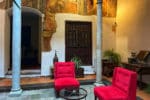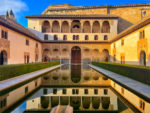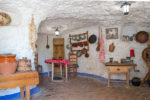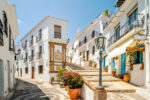Before you plan your Cordoba itinerary, check out this guide to Moorish Cordoba and the 16 Moorish monuments that represent the Arab legacy in Andalusia.
Imagine a flourishing Muslim city of a million people at the southern tip of Europe. At the end of the first millennium AD, Cordoba was ruled by the Umayyad Caliphate and it was one of the most culturally and politically advanced cities in the world, a rival of Constantinople.
It was the first capital of Al-Andalus – a Muslim kingdom that ruled over the Iberian Peninsula for five centuries.
The Moors left a magnificent legacy in Cordoba, from the magnificent Mosque-Cathedral to the famous Cordoba patios filled with potted plants, fountains, and decorative tiles.
This guide takes you on a journey to Moorish Cordoba to discover the imperial capital of Al-Andalus. And if you would like to see more Moorish heritage in Spain, consider taking a road trip through Southern Spain and include other famous Moorish cities like Granada and Sevilla.
Who were the Spanish Moors?
It is important to note that while many sources refer to the Muslim rulers of Cordoba as the Moors, they were not, in fact, Moroccan Berbers, as the name Moors suggests. Initially, yes, it was an army of Berbers led by the Arab commanders backed by the Umayyad caliphs of Damascus (Syria) that invaded the Iberian Peninsula in 711.
Within just a few years, most of the peninsula was under Muslim rule in the newly established Muslim domain of al-Andalus. But the splendour of the al-Andalus kingdom is due to a fateful event in Syria in 750 AD when the Umayyad dynasty fell to their rivals Abbasids. To affirm their power, Abbasids murdered every member of the Umayyad dynasty but one. Abd al-Rahman I, the grandson of the last Caliph, escaped to Spain, where he established Umayyad Emirate with the capital in Cordoba.
As the former rulers of the entire Muslim world, Umayyads rebuilt their capital in the image of their homeland in Syria and eventually proclaimed Umayyad Caliphate in al-Andalus, in open rivalry to Abbasid rule in Baghdad.
Mezquita
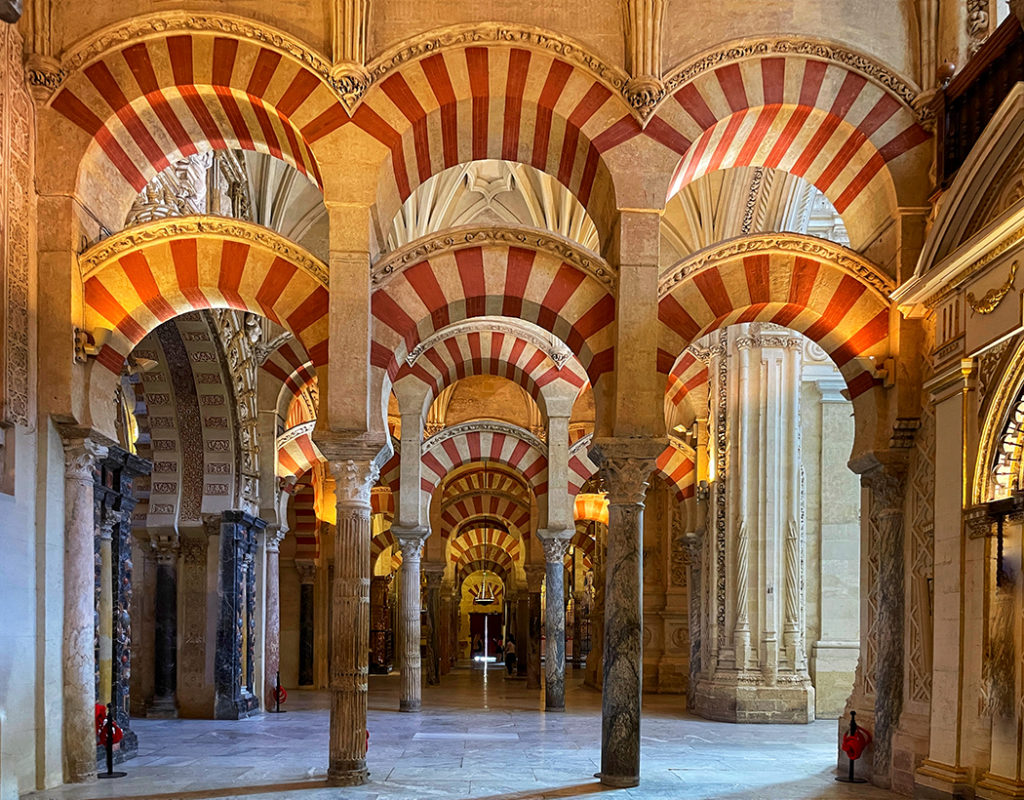
Cordoba Mosque-Cathedral, or the Mezquita, is one of the most extraordinary buildings in the world and the most significant site in Moorish Cordoba. Sitting on a foundation of a Roman Basilica, the mosque was built in 785 when Córdoba became the capital of Al-Andalus. Over the centuries, it has been expanded four times to become the enormous structure you see today.
The most striking features of the Mezquita are the giant arches supported by a forest of about 856 columns recycled from the earlier Roman, Byzantine and Visigothic structures. When it was built, Mesquita was the second-largest mosque in the world.
When Cordoba fell back to the Christian monarchs in 1236, they couldn’t bring themselves to destroy such an incredible structure and instead built an exquisite Renaissance-style cathedral right into the centre of the mosque.
Plaza del Triunfo
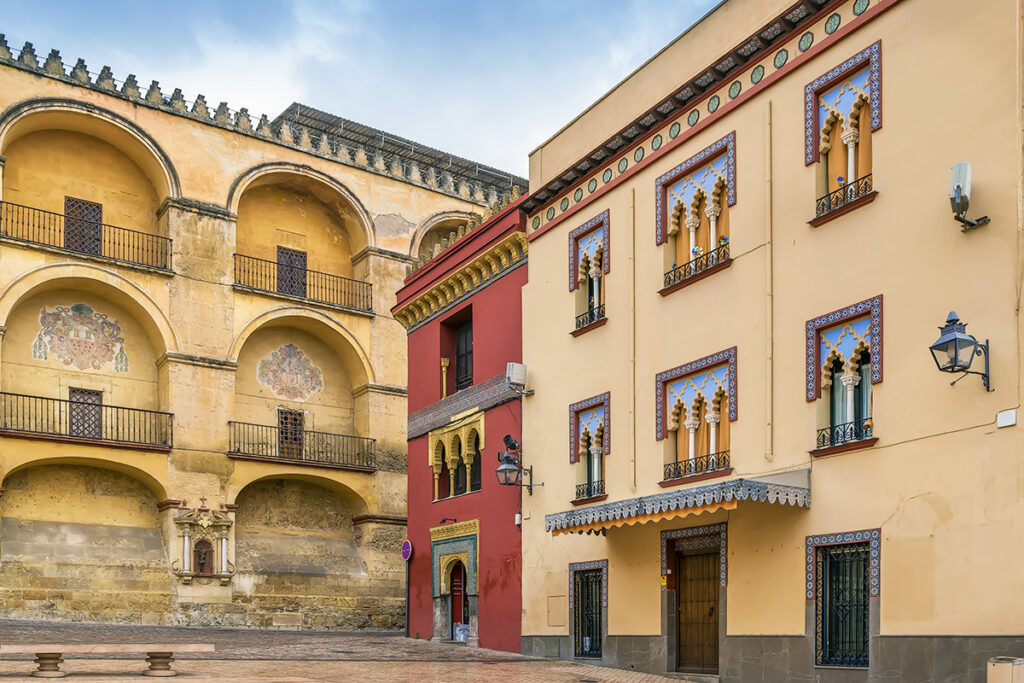
Backed up by Mezquita’s towering wall and looking into the Roman Bridge, Plaza del Triunfo has several gorges Moorish-style buildings that make it a very atmospheric spot.
The square itself is not Moorish. It is dedicated to the monument of Archangel San Rafael, custodian of the city of Córdoba. But its position between the Mezquita and the Bridge with Calahorra Tower on the far end gives you the point of view of the Umayyad caliphs.
The palace of the Caliph stood next door to the mosque. The site is now occupied by the Episcopal Palace.
Callahora tower
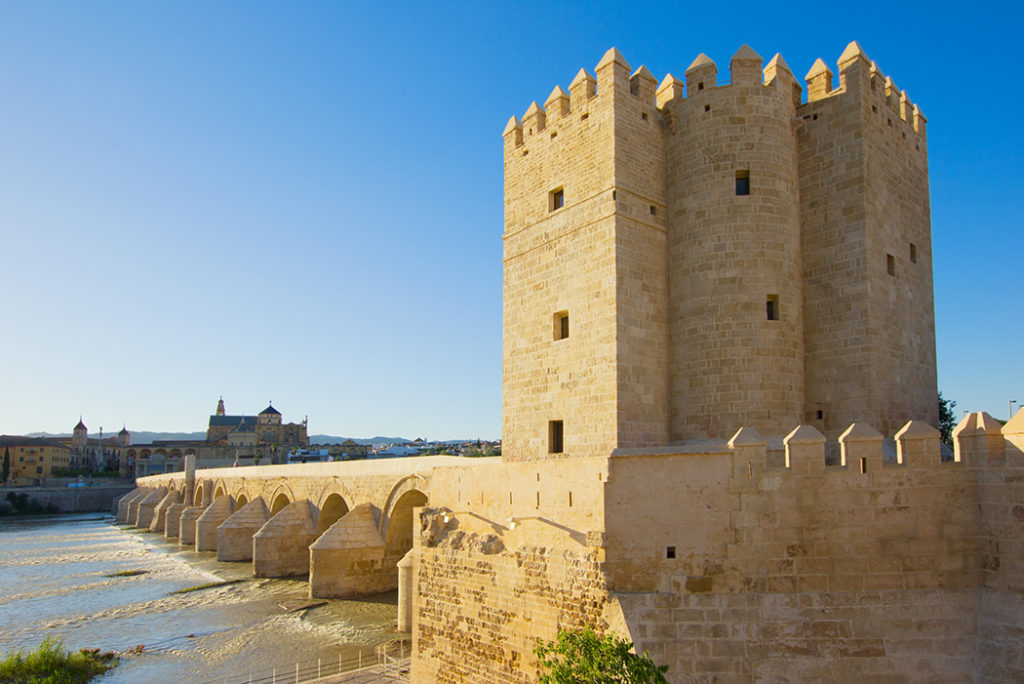
Located on the other side of the bridge, opposite the Mezquita, Calahorra Tower is the oldest defence building in Moorish Cordoba. It was originally built by the Moors but was later expanded by Christian kings who added a third tower to the structure, giving it a fortress-like appearance.
The main draw of Calahorra is the amazing view of Mezquita, the bridge and the old town. There is also an ethnographic museum in the tower – Al-Andalus living museum.
Most people skip the museum and head straight for the views. And it’s true that the museum is not as interesting as most other Cordoba museums, but there are two pieces that are worth a look: the intricate models of Alhambra and Mezquita. The Alhambra model is particularly interesting as it features the entire complex.
As an added bonus, the riverbank at the base of the tower is a good place to see some of Cordoba’s wild inhabitants. There are usually a couple of herons and egrets wading among the reeds, not to mention dozens of swallows zipping through the air above the river.
If you walk along the riverbank, you might spot little grebes, coots, and moorhens in the water. While the trees on the riverbank might turn up several species of thrushes, warblers and finches.
Casa Andalusi
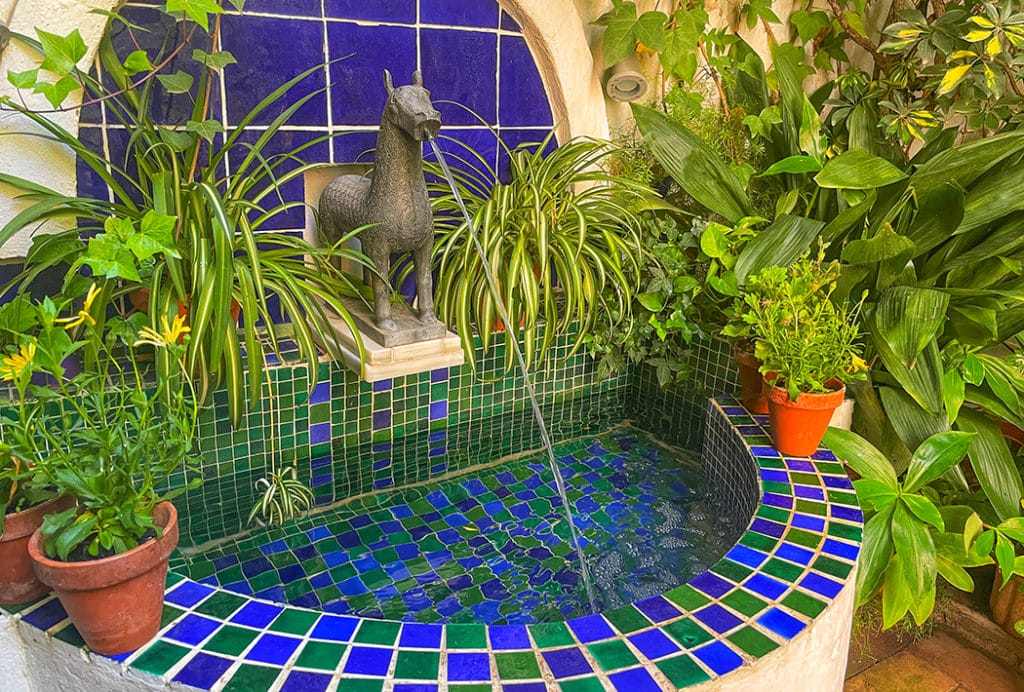
Tucked away on the narrow street in Juderia, Casa Andalusi is a lovely house museum that gives you a glimpse into the Muslim lifestyle in Cordoba in the 12th century. It is very much worth the 4 euro entrance fee. The house is a typical Muslim home of that era with a number of rooms, 3 patios, and a basement.
One of the rooms houses a model of one of the first paper factories in the Western world and a variety of exquisite Arabic scrolls and books. This room opens onto a small courtyard with a gorgeous fountain.
The basement is even more fascinating. Like most houses in Cordoba, this house was built on the site of an earlier structure – Visigothic in this case. The ancient floor tiles inlaid with faded mosaics are preserved in the basement, as well as a large amphora and a few other pre-Muslim artifacts.
Alchemy Museum Al-Iksir
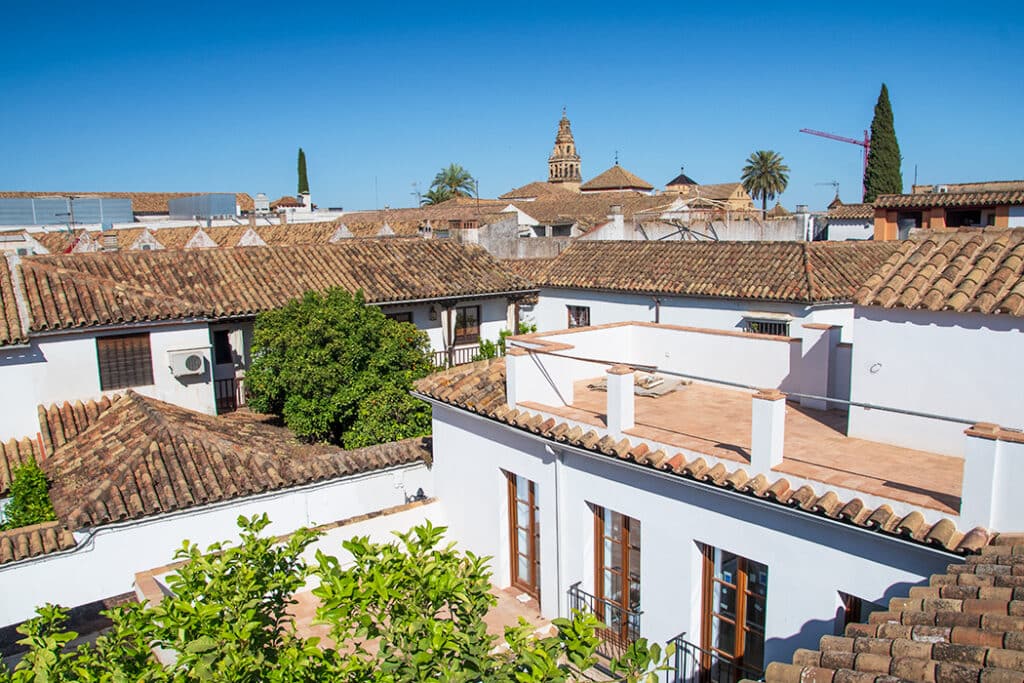
Almost next door to Casa Andalusi, there is another fully renovated 13th-century house that houses Alchemy Museum Al-Iksir. The ticket for Casa Andalusi also gives you admission to the Alchemy Museum.
This quirky museum displays a variety of science and alchemy objects like alchemy stones, elixirs, medicines, mortars, and various instruments. Upstairs there is an alchemy lab.
The museum is quite lovely, but the best part is the view of Moorish Cordoba rooftops from the roof terrace. And since this museum is not one of the key tourist attractions, you’ll be able to enjoy the view in peace and quiet.
Puerta Almodovar & Ibn Rushd
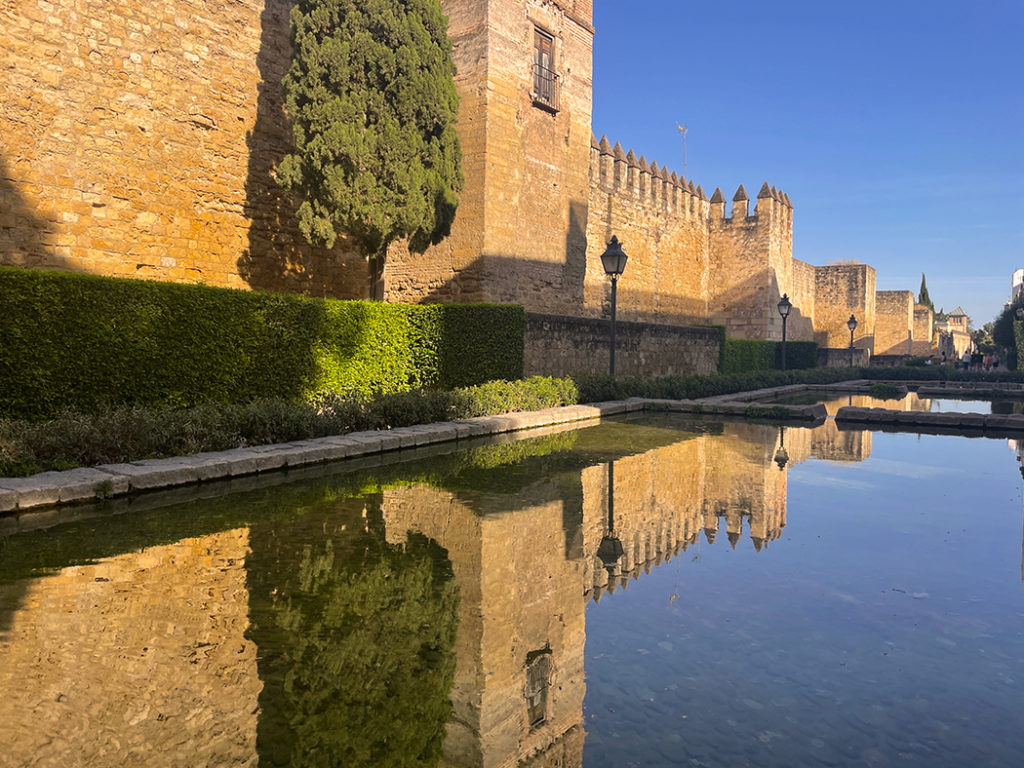
While you are in Juderia, make sure to walk through the Almodovar Gate (Puerta Almodovar). From within Juderia, the gate doesn’t look like much but walk through it, and you discover a long stretch of the imposing medieval city wall of Cordoba, complete with a defence moat.
While it may not be as complete and preserved as the town wall of Avila, it is still an impressive and imposing structure.
If you visit in the late afternoon, you’ll see the golden-coloured wall reflected in the still water of the moat. It is a jaw-dropping site, even for Cordoba.
If you feel like taking a walk along the wall (Calle Cairuan) you’ll soon come across the statue of Ibn Rushd – a Muslim philosopher, judge, and doctor from the 13th century best known for reviving Aristotle’s ideas in the Western culture.
Cordoba Patios
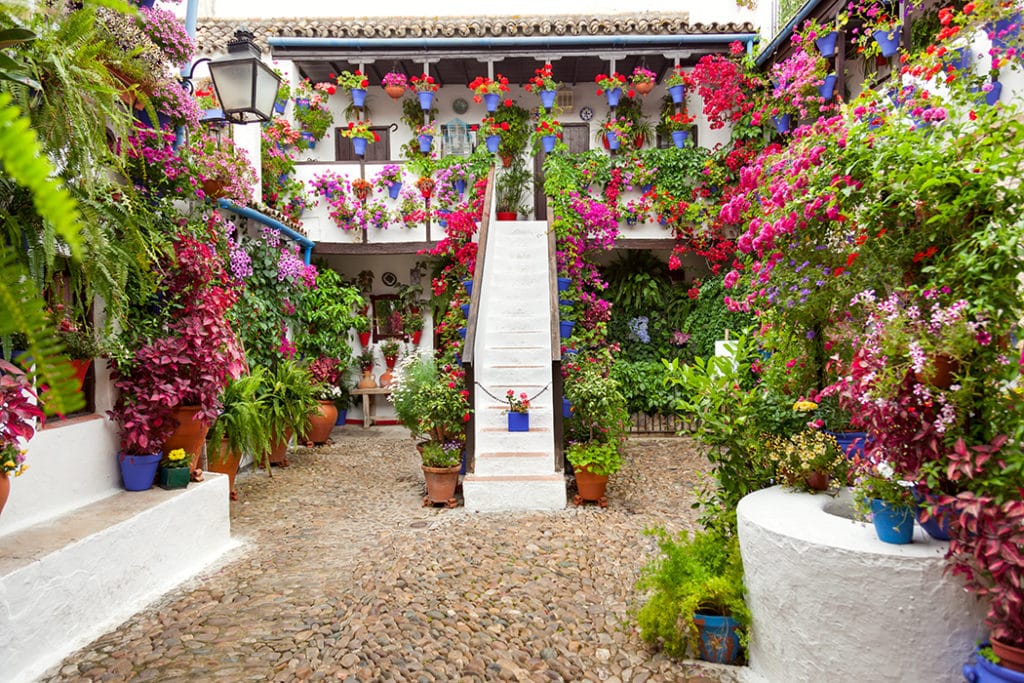
Cordoba’s patios are as old as the city itself. First, the Romans started building their houses around a central courtyard, to escape the heat of Andalusian summers.
Arabs perfected the tradition by turning the courtyards into colourful oases of potted plants, wrought iron gateways, and tiled fountains. Today Cordoba’s courtyards are famous all across Europe. The best time to see them is during the Patio Festival that runs during the first week of May.
Zoco Souk
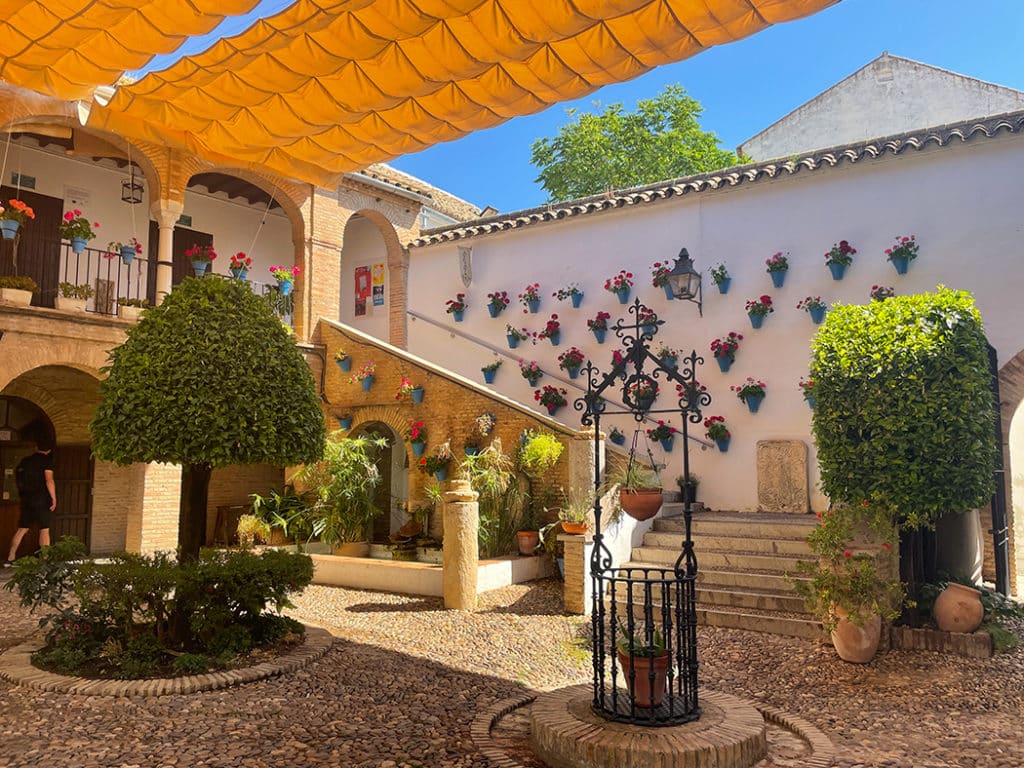
Practically next door, the Soco, an old Arab souk (market), has been turned into a crafts arcade where artisans are at work producing leather and silver products mostly for sale to tourists. In the summer evenings when relative coolness comes to Córdoba, amateur flamenco dancers make the street a favoured nightspot.
Zoco Municipal or Cordoba’s souk is a crafts shopping experience with a difference. Not only do you get to visit Spain’s first craft market, but you can also observe the artisans as they create the crafts. The souk is, in fact, a series of artisans’ workshops where you can also buy their crafts.
Zoco souk specialties include silverware, jewellery, leather, wooden puppets, and some of the finest filigree in Cordoba. Filigree is the art of fine silverwork that creates shapes of fine metal wire with tiny beads and twisted threads soldered together to create exquisite designs.
Streets of Cordoba Historic Center
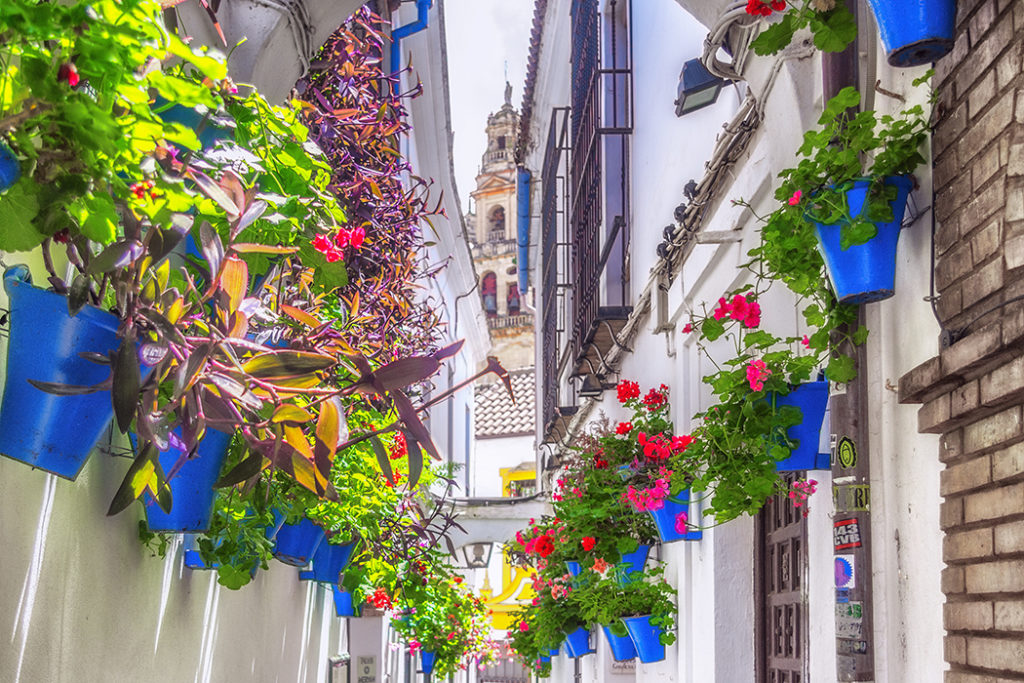
To get a sense of people’s lives in Moorish Cordoba, wander among the small winding streets of the historic centre. Some of the most picturesque streets are Calleja de la Flores (Flower Alley) and Calleja Pañuelo (Alley of the Handkerchief).
Calleja de la Flores is a flower-studded alleyway with a tiny square at the end. From the square, you can see Mezquita’s bell tower framed by the whitewashed walls of residential houses. In Moorish times, of course, the alley would have looked out on the minaret.
Calleja Pañuelo is remarkable for being the narrowest alley in Cordoba; at its narrowest point, it is no wider than a lady’s handkerchief. The alley ends at an equally tiny square with a small fountain and a single orange tree. Some say it’s the smallest square in the world.
Caliphal Baths
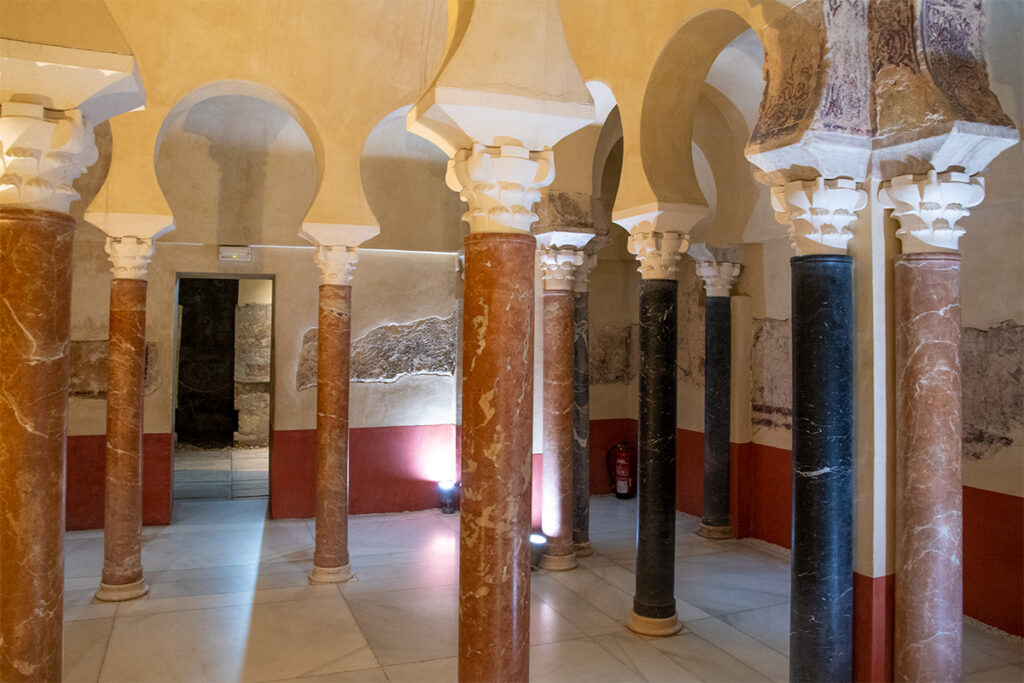
The baths were constructed in the 10th century and originally stood adjacent to the Alcazar of Cordoba, which was demolished after the Christian re-conquest of Cordoba and replaced with a Christian Alcazar.
Bathhouses (or hammams) of this type were a common feature of the Arab culture in Al-Andalus and all of the Muslim world.
They were modelled on Roman bathhouses (that you can still see underneath the streets of Cordoba) that were already part of urban life in Cordoba for several centuries. Like today’s Hammam Al-Andalus, caliphal baths consisted of the usual sequence of cold, warm, and hot rooms.
Farmacia Botica
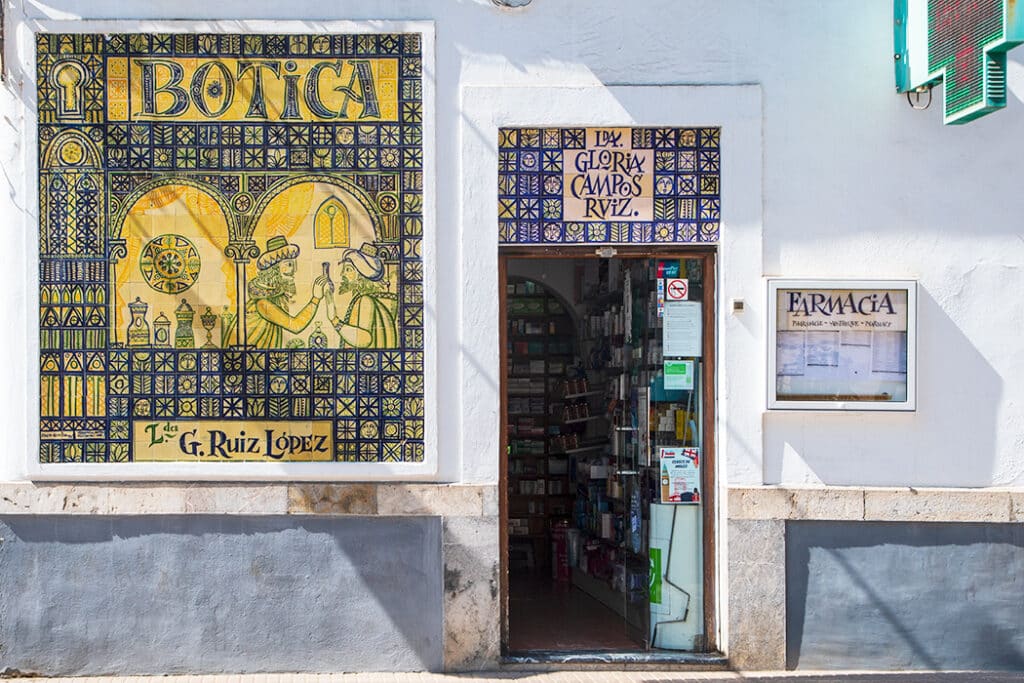
Across the square from the Caliph baths, at Plaza Campo Santo de Los Mártires, 6, you’ll find Cordoba’s prettiest pharmacy – Farmacia Botica. The antique tiled signs on the facade of the building look the same as they would’ve centuries ago.
The Arab House
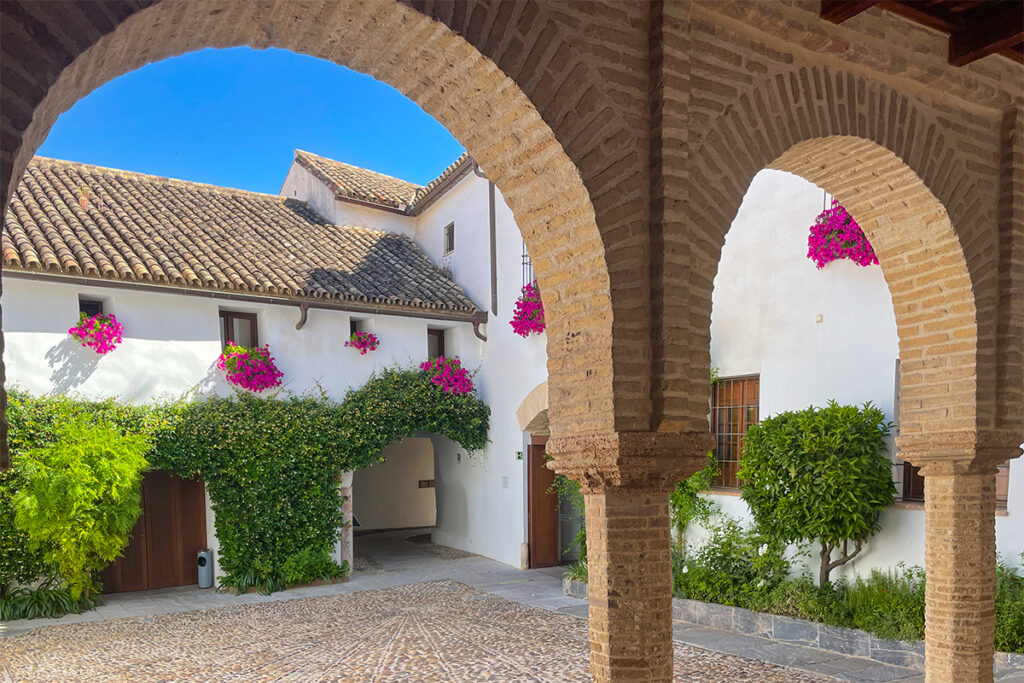
The Arab House is a lovely example of a Mudejar-style building, which is an architectural style that combines both Muslim and Christian elements.
The house is a fully restored palatial residence from the late Middle Ages. As typical in a Moorish house, the central courtyard is decorated with a fountain and potted plants. The front wall has a traditional arched portico built in Nazari style (the Arab dynasty who ruled Granada) which then leads to a hall with a decorated ceiling.
Moroccan Tea House
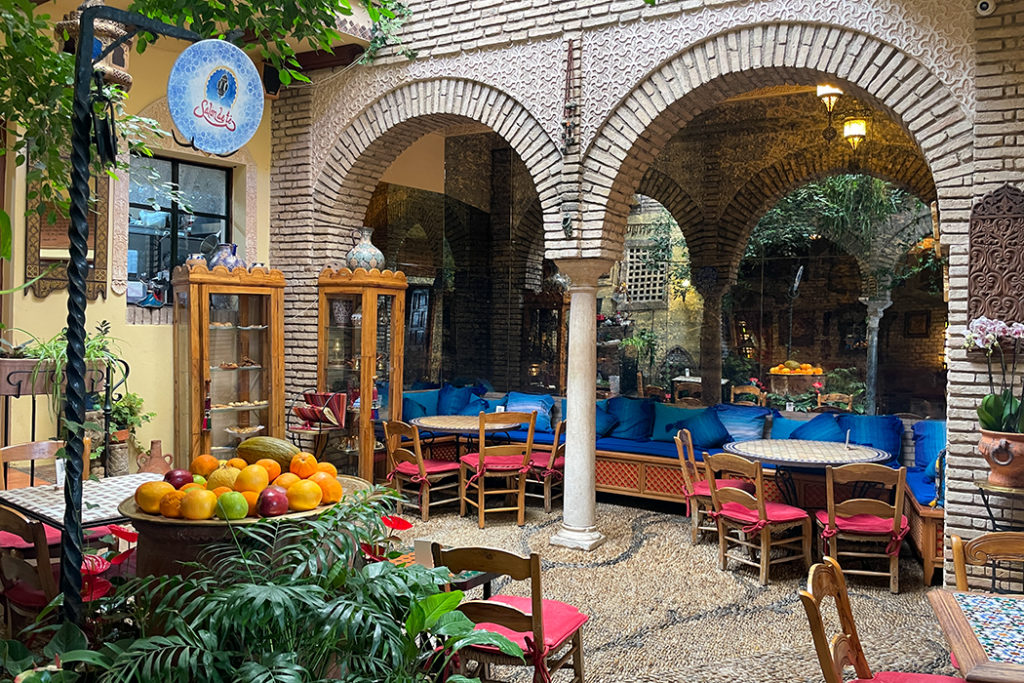
To have a meal in Moorish style, head to Cordoba’s most charming Moroccan Tea House – Salon de Té. Located in the Juderia, in an unassuming 13th-century building at Calle Buen Pastor, 13, Salon de Te is incredibly atmospheric, featuring fine North African decor complete with columns and arched porticos, plants climbing up the walls and gentle mood lighting.
Order a pot of mint tea for a traditional Moroccan experience or a full Andalusian breakfast and spend some time simply soaking in the ambience of the place.
Hammam Al Andalus
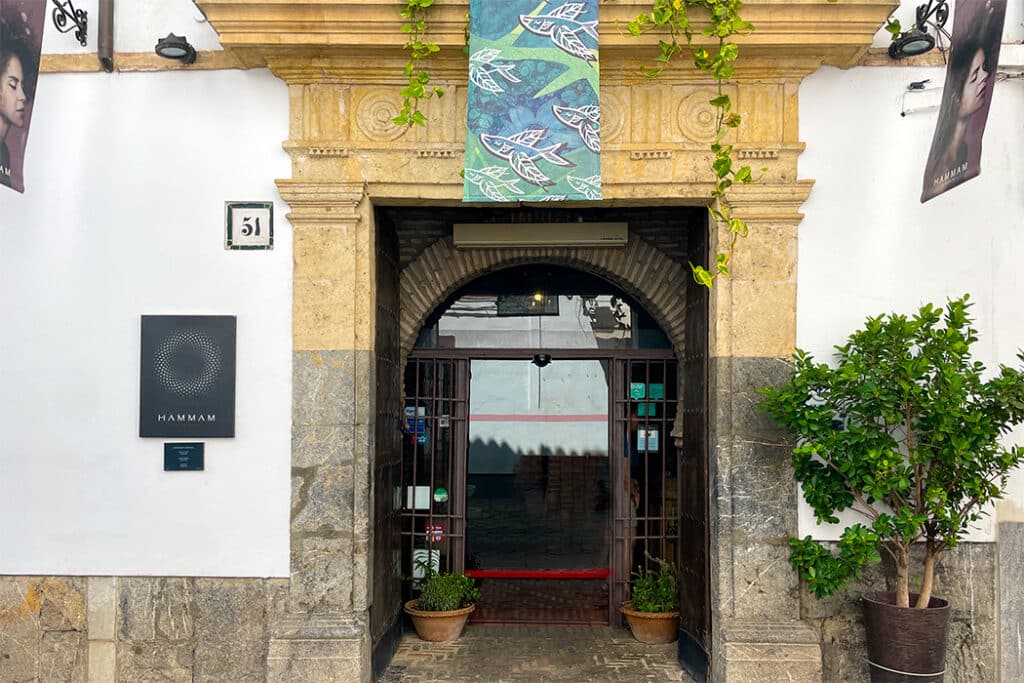
After a long day of walking and exploring, it’s time to experience the Arab culture in the atmospheric Hammam Al-Andalus. Spend an hour meandering between medium, hot and cold pools and a sauna room, and you’ll emerge completely rejuvenated and blissfully relaxed.
Cordoba’s Hammam Al-Andalus near the Mezquita offers a variety of options for a visit, from the standard bathing experience for 34 Euro to a decadent package of bathing, a traditional kessa bath and a relaxing massage for 87 Euro.
Medina Azahara
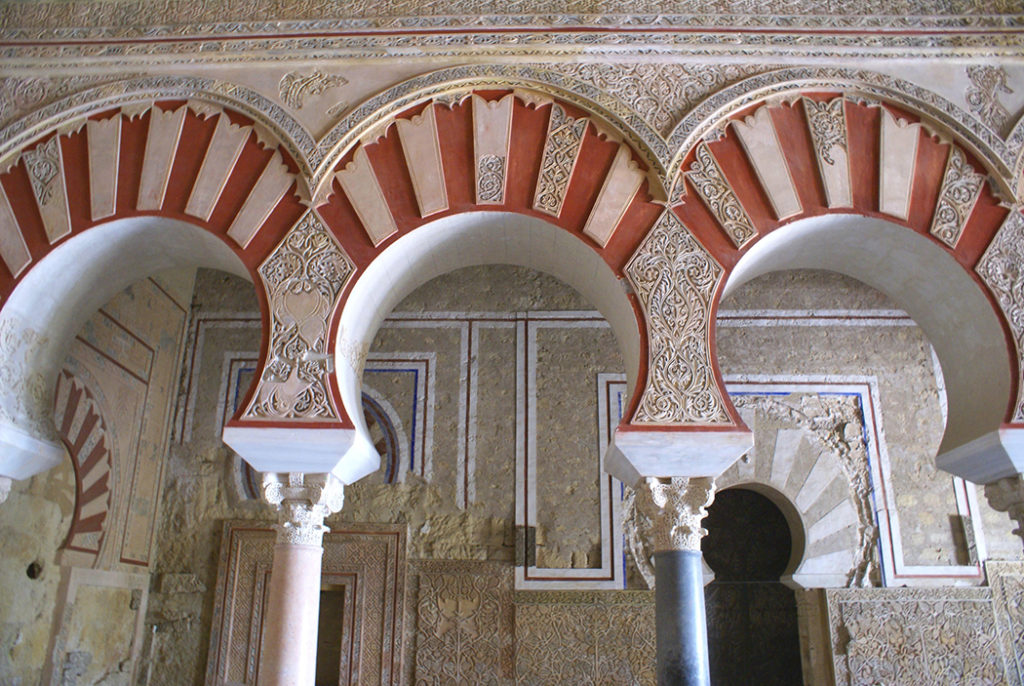
The final attraction of Moorish Cordoba and the city’s fourth UNESCO site is Medina Azahara. Located 5 miles outside of Cordoba, Medina Azahara was a palace constructed in 929 A.D. by the first Caliph of Cordoba, Abd-al Rahman III. The rumour has it that the palace was dedicated to the caliph’s favourite, Azahara.
Sadly, only seven years after its completion, the palace was destroyed in the succession of Civil Wars that ravaged Andalusia at the turn of the 11th century. You can only imagine how beautiful the palace must’ve been if even its crumbled arched walls carry the status of a UNESCO Heritage site.
You can visit the site independently, but the buses are quite infrequent, and the taxi is pretty expensive. If time is of the essence, I’d definitely recommend visiting Medina Azahara on an organized tour from Cordoba.
More on Exploring Spain
- 15 Stunning Waterfalls in Spain to Add to Your Bucket List
- Alicante Old Town – The Charming Barrio Santa Cruz
- Watching Iberian lynx in Sierra de Andujar Natural Park, Spain
- 8 Amazing Things to Do in Segovia on a Day Trip from Madrid
- Discover Madrid Old Town: From the Moors to the Austrians
- Malaga Old Town: Where Romans, Moors and Picasso Meet
- 5 Gorgeous Hotels in Granada to Consider for your Next Trip
- Discover Moorish Granada in One Day on This Self-Guided Walk
- Sacromonte Caves: The Best-Kept Secret in Granada
- 17 Fabulous Weekend Breaks in Spain: Must-See Destinations and Hidden Gems

